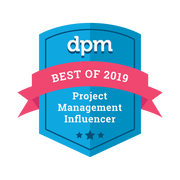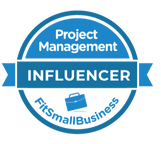The project initiation and planning phase is the first major phase of the project, where the project’s aims, objectives, scope, costs and approach are established. This is where you define the ground rules and lay the foundation for everything that is to come later.
The following tips will help you to build a strong foundation for your project and to kick if on the right foot;
1. Plan your work
The very first thing you should do before you start engaging in lots of activities, is to take time to consider what this phase is all about and what you want to achieve. Create a list of the tasks you need to embark on, prioritize it and create a mini plan for the initiation and planning phase.
2. Understand the business case and constraints
If the project has a business case in written format, ask to see it and query anything you do not understand. If a written business case does not exist, it may well be up to you to pull it together and to get it approved. It is imperative that a sound business case is in place and that there is a clear commitment from management to initiate the project on that basis. Pay special attention to the constraints, dependencies and assumptions you come across. They are likely to be risks or issues which must be addressed during the planning stage.
3. Begin with the end in mind
The best way to initiate a project is to begin with the end in mind. Knowing the purpose and the end vision provides direction, focus and motivation, and is a frame of reference against which to make decisions. Visualize the end state of your project once all changes have taken place and all benefits have been realized. What does that look like and how does it differ from the current state? Really feel the end product. Imagine the benefits and how they will affect the users.
4. Engage the stakeholders
Early on in the initiation phase, it is important that you take the time to understand who the main stakeholders are and the interests they have in the project. Find out which parts of the business they represent, which outcomes they are looking for and how they prefer to be communicated with during the project. With that knowledge, form the project’s steering committee so that you have a group which can help you to make decisions and move the project forward. Choose people who are experienced and supportive and who have been endorsed by the project sponsor.
5. Identify and build the initiation team
You will also need to identify and put together a team that can assist you in analyzing the project’s scope and requirements and that has the knowledge to propose a sound solution to the client’s problem. Set the standards high and choose the most experienced and proactive people if you can. Ideally they should be able to not only guide you on what to build – but also be able to physically take on the prototyping of the proposed solution.
6. Understand and document the project scope
Spend as much time as possible with your customer and end users so that you fully understand their needs and requirements. Clearly define what is in and out of scope and use text, diagrams and illustrations to verify that you have understood it correctly. Remember to also enquire about non-functional requirements, such as maintainability, scalability and performance as well as how the solution will be supported and maintained after project completion.
7. Propose a solution to the client’s problem
Spend time identifying the different solutions that may satisfy your customer’s needs and discuss their pros and cons. What technologies, materials and design principles could you make use of? Compare them to your customer’s success criteria and make sure that all of the users’ high- and medium-priority requirements are satisfied. Build a prototype or run a demonstration of your proposed solution as this will illustrate your proposal much more effectively than simply explaining it.
8. Estimate the proposed solution
During the initiation and planning phase you must provide a high level estimate of the project’s effort. In doing so, make use of different estimation tools and methods, and look at past projects of similar size and complexity for guidance. Involve as many experienced people as possible and provide both best-case and worst-case estimates for each detailed feature. Factor in all project phases and activities, and add contingency to every part of your estimate to account for any risks you have uncovered.
9. Produce a high-level schedule
The first step in producing a schedule is to identify dependencies between your deliverables and to prioritize them according to business needs and complexity. Find out if there are any milestones you must hit at a certain time. Produce a high-level dependency diagram or product flow diagram to help you visualize the sequence of deliverables. Arrange your deliverables into phases and iterations with clear milestones, and aim to deliver the core and most critical part of the solution first. Then you can start to break down the initial phases and iterations into more detail and assign resources.
10. Gain sign-off and acceptance to proceed
Before you wrap up the initiation and planning phase you must gain sign-off and acceptance to proceed to the next phase. Capture all your findings in the project initiation document (PID) and get it signed off by the steering committee. Make sure it captures all details regarding project scope, objectives, solution and high level plan. Ideally your stakeholders should also sign off on the prototype and provide you with funding for the project to proceed to the execution stage. To download a PID template, request access to the RESOURCES Page.
If you liked this post, you may also like:
10 Guidelines for Estimating Project Effort
Risk management is how adults manage projects!
8 Tips for Managing Project Costs
Top Tips for Gathering Requirements








 RSS Feed
RSS Feed